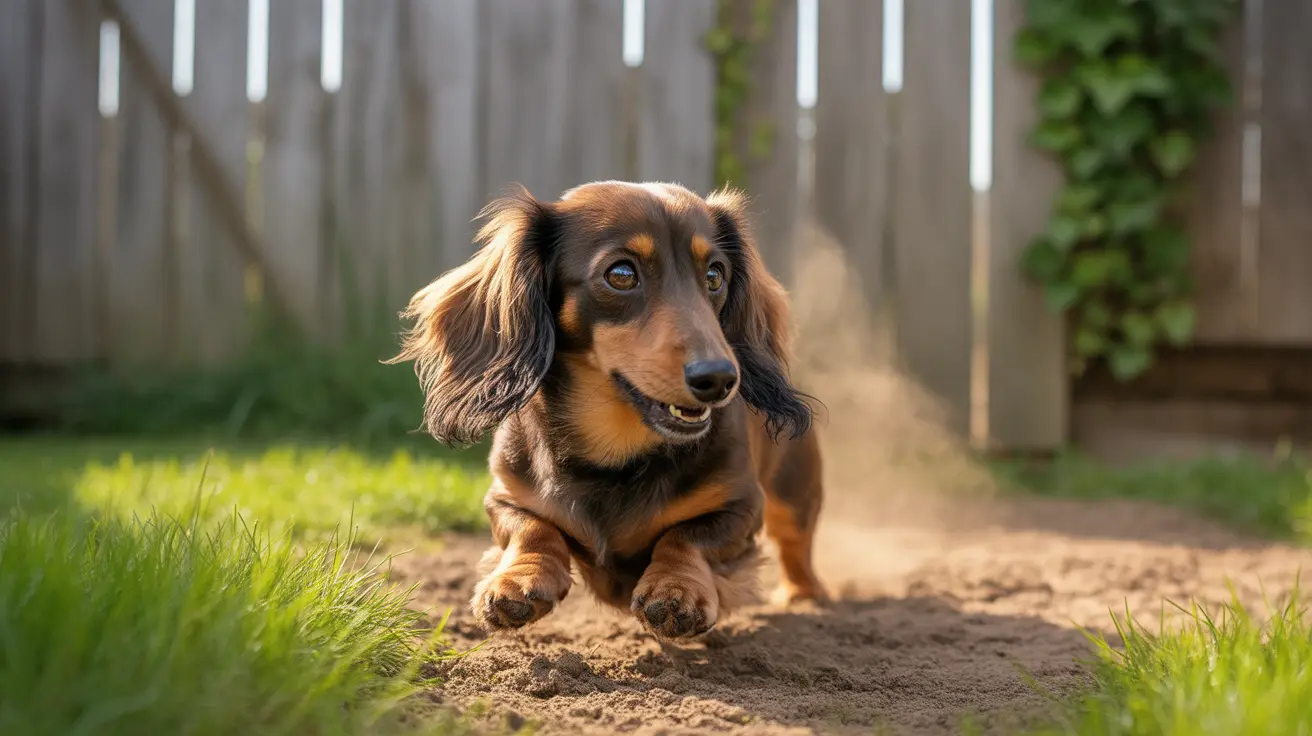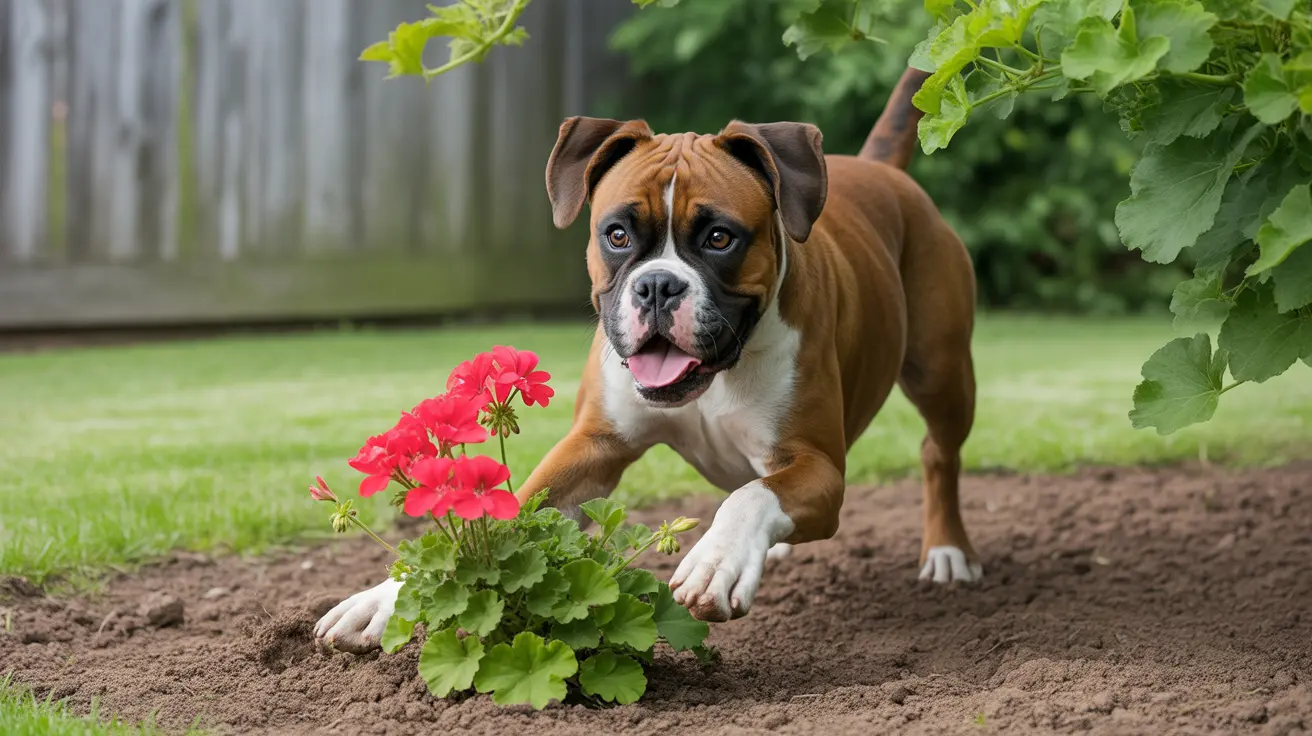Dog Dull Coat Causes and Treatment: A Complete Guide to Restoring Your Pet's Healthy Fur
A lustrous, thick coat is one of the most visible indicators of your dog's overall health and well-being. When your beloved companion's fur begins to lose its shine, becomes thin, or develops patchy areas, it's natural to feel concerned. Hair loss in dogs, medically known as alopecia, is a common issue that affects dogs of all breeds and ages, and understanding its underlying causes is crucial for effective treatment.
Unlike normal shedding, which is part of the natural hair follicle life cycle, problematic coat issues typically stem from underlying medical conditions that require attention. The good news is that most causes of dull coats and hair loss are not life-threatening and can be successfully managed with proper diagnosis and treatment. This comprehensive guide will help you understand the various factors that can affect your dog's coat quality, recognize early warning signs, and work with your veterinarian to restore your pet's healthy, vibrant fur.
Understanding Normal vs. Abnormal Hair Loss in Dogs
Before diving into the causes of coat problems, it's essential to distinguish between normal shedding and abnormal hair loss. Normal shedding is a natural process that varies among breeds, particularly in double-coated dogs with both topcoats and undercoats. This regular hair replacement is part of healthy coat maintenance and typically doesn't result in bald patches or skin irritation.
Abnormal hair loss, or alopecia, involves significant hair thinning or complete baldness that exposes the dog's skin. This condition can be congenital (present at birth or developing over time) or acquired, temporary or permanent. Alopecia is characterized by local or widespread baldness, often accompanied by symptoms such as reddened skin, scabs, hyperpigmentation, or external parasites.
Hormonal Imbalances: The Hidden Culprits Behind Coat Problems
Endocrine or hormonal imbalances represent some of the most common medical causes of dull coats and hair loss in dogs. These conditions affect the hair follicle cycle and can dramatically alter your dog's coat quality and appearance.
Hypothyroidism and Coat Health
Hypothyroidism is a prevalent endocrine disorder that significantly impacts coat quality. When the thyroid gland doesn't produce adequate hormones, it directly affects the hair follicle's ability to regenerate healthy fur. Dogs with hypothyroidism often develop a dull, thinning coat that may become coarse and brittle. The condition requires blood tests for proper diagnosis and is highly treatable with thyroid supplements like levothyroxine.
Cushing's Disease and Hair Loss
Cushing's disease, characterized by overproduction of cortisol, causes distinctive coat changes alongside other symptoms such as increased appetite and urination, pot-bellied appearance, lethargy, and obesity. The excess cortisol interferes with normal hair growth cycles, leading to progressive hair thinning and a dull coat appearance. Diagnosis requires comprehensive blood tests, and treatment options include medications like trilostane or mitotane.
Post-Neutering Hormonal Changes
Hormonal changes following neutering can cause noticeable alterations in your dog's coat texture and quality. The procedure affects hormone levels that influence hair follicle function, potentially resulting in a duller, rougher coat texture than before the surgery.
Allergies: When the Immune System Affects the Coat
Allergic reactions are among the most frequent causes of coat problems in dogs, often manifesting as itchiness, hair loss, and dull fur. The constant scratching and skin irritation associated with allergies can severely damage the coat and underlying skin.
Types of Allergies Affecting Coat Health
Dogs can develop allergies to various substances, including environmental allergens, food ingredients, and flea saliva (flea allergy dermatitis). These allergic reactions create inflammation that disrupts normal hair growth and can lead to secondary bacterial or fungal infections that further compromise coat quality.
Diagnosing and Managing Allergies
Veterinary diagnosis of allergies typically begins with parasite treatments to rule out external causes, followed by elimination diets to identify food allergies. More complex cases may require intradermal skin testing or allergy blood tests. Treatment often involves a combination of allergy medications like Apoquel, Cytopoint, or Zenrelia, along with dietary modifications and environmental management.
Nutritional Factors and Malabsorption Issues
Proper nutrition plays a crucial role in maintaining a healthy, lustrous coat. Nutritional deficiencies in key vitamins and minerals can directly impact coat quality and hair growth.
Common Nutritional Deficiencies
Deficiencies in zinc, vitamins E, A, biotin, or iron can contribute significantly to hair loss and coat dullness. Additionally, chronic gastrointestinal diseases can lead to nutrient malabsorption, preventing your dog from properly utilizing essential nutrients like folic acid and vitamin B12, even when present in adequate amounts in the diet.
Addressing Nutritional Causes
Veterinarians may recommend blood tests to identify specific deficiencies and suggest dietary changes or supplements. Food trials with hypoallergenic or limited-ingredient diets may be necessary to address underlying food sensitivities that contribute to poor nutrient absorption.
Parasites: External Threats to Coat Health
External parasites represent a major category of coat problems, causing direct damage through irritation, scratching, and secondary infections. These infestations can rapidly deteriorate coat quality and create ongoing skin problems.
Common Parasites Affecting Coats
Fleas, ticks, lice, and especially mites can cause significant itching and coat damage. Mites, which cause mange, are particularly problematic and require specific diagnostic procedures like skin scrapings and PCR tests for accurate identification. Fungal infections such as ringworm can also cause hair loss and require black light exams and cultures for diagnosis.
Treatment and Prevention
Treatment varies depending on the specific parasite involved and may include topical or oral anti-parasiticide medications. Prevention involves year-round parasite control and maintaining a parasite-free environment for your dog.
Diagnostic Procedures: How Veterinarians Identify Coat Problems
Accurate diagnosis is essential for effective treatment of coat problems. Veterinarians employ a systematic approach to identify the underlying causes of your dog's coat issues.
Initial Examination Process
The diagnostic process begins with obtaining a thorough history of your dog's symptoms, including when the problems started, any changes in diet or environment, and previous medical treatments. The veterinarian will perform a comprehensive physical examination to identify patterns of alopecia and signs of skin infection, considering breed predisposition and exposure history.
Advanced Diagnostic Tests
Depending on the initial findings, veterinarians may recommend various diagnostic tests including microscopic hair examinations, skin scrapes to detect parasites, bacterial and fungal cultures, skin biopsies for autoimmune conditions or cancer diagnosis, blood tests for hormonal imbalances, and fecal analyses for internal parasites.
Treatment Options: Restoring Your Dog's Healthy Coat
Treatment approaches vary significantly based on the underlying cause of the coat problems. Recovery time can range from days to months, and some conditions may require lifelong management.
Medical Treatments
Specific medical treatments may include oral antibiotics for bacterial infections, antifungal medications for fungal issues, anti-inflammatory drugs like steroids, hormone replacement therapy for endocrine disorders, and specialized medications for autoimmune conditions such as cyclosporine.
Supportive Care and Topical Treatments
Supportive care often involves medicated shampoos, mousses, wipes, sprays, or ointments designed to soothe irritated skin and promote healing. Anti-itch and hydrating products can provide significant relief while addressing the underlying condition.
Behavioral and Environmental Modifications
Some cases may require behavioral modification, including anti-anxiety medications and calming supplements for dogs whose coat problems stem from stress or compulsive behaviors. Recovery cones may be necessary to prevent further self-trauma from scratching during the healing process.
Prevention Strategies: Maintaining Long-Term Coat Health
While some causes of coat problems, such as congenital and hereditary conditions, cannot be prevented, many acquired causes are preventable with proper care and attention.
Regular Veterinary Care
Routine health check-ups assist in early detection and prevention of coat problems. Early veterinary examination for any unusual hair loss spots is advised to prevent the condition from worsening and becoming more difficult to treat.
Environmental Management
Maintaining a parasite-free environment through consistent flea and tick control, providing appropriate nutrition, and minimizing environmental stressors all contribute to maintaining healthy coat condition throughout your dog's life.
Frequently Asked Questions
What are the early signs that my dog's coat problems need veterinary attention?
You should seek veterinary care when hair loss is unusual, itchy, worsening, or accompanied by skin irritation, abnormal odor, infected skin, behavioral changes, or spreading skin lesions. Red, inflamed, thickened, oozing, bleeding, or malodorous skin around areas of hair loss indicates the need for professional evaluation.
How long does it typically take for a dog's coat to recover after treatment?
Recovery time varies significantly depending on the underlying cause, ranging from days to months. Some conditions, particularly hormonal imbalances or chronic allergies, may require lifelong management. Mild cases of alopecia may resolve without treatment, while more complex conditions need ongoing veterinary care.
Are certain dog breeds more prone to coat problems than others?
Yes, certain breeds show predisposition to alopecia and coat issues, including Mexican Hairless, Chinese Crested, Bulldogs, Dobermans, Yorkshire Terriers, Dachshunds, Greyhounds, Siberian Huskies, Pomeranians, Golden and Labrador Retrievers, and West Highland White Terriers. However, coat problems can affect any breed.
Can nutritional supplements help improve my dog's coat quality?
Nutritional supplements can be beneficial when specific deficiencies are identified through blood tests. Key nutrients for coat health include zinc, vitamins E and A, biotin, and iron. However, it's important to work with your veterinarian to identify actual deficiencies rather than supplementing without professional guidance.
When should I be concerned about normal shedding versus abnormal hair loss?
Normal shedding is a natural hair replacement process that varies by breed and season. You should be concerned when shedding creates bald patches, is accompanied by skin irritation, causes excessive scratching, or results in significant changes to coat texture and appearance. Abnormal hair loss typically exposes the underlying skin and may include other symptoms.
Are there any home remedies I can try before seeing a veterinarian?
While medicated shampoos designed for dogs may provide some relief, they should be used cautiously before obtaining a proper veterinary diagnosis. Home remedies without professional guidance can potentially worsen the condition or delay appropriate treatment. It's best to consult with a veterinarian for persistent or concerning coat problems.
How can I prevent parasite-related coat problems in my dog?
Prevention involves year-round parasite control using veterinary-approved flea and tick medications, maintaining a clean environment, regular grooming to detect early signs of infestations, and avoiding areas known to have high parasite populations when possible. Consistent preventive care is more effective and less costly than treating established infestations.
Conclusion
Understanding the various causes behind dog dull coat issues empowers you to take proactive steps in maintaining your pet's health and appearance. From hormonal imbalances and allergies to nutritional deficiencies and parasite infestations, each cause requires specific diagnostic approaches and treatment strategies. The key to successful management lies in early recognition of problems, prompt veterinary consultation, and consistent follow-through with recommended treatments.
Remember that while coat problems can be concerning, most causes are treatable with proper veterinary care. By working closely with your veterinarian and maintaining good preventive practices, you can help ensure your dog maintains a healthy, lustrous coat throughout their life. Don't hesitate to seek professional help when you notice changes in your dog's coat quality – early intervention typically leads to better outcomes and faster recovery times.





